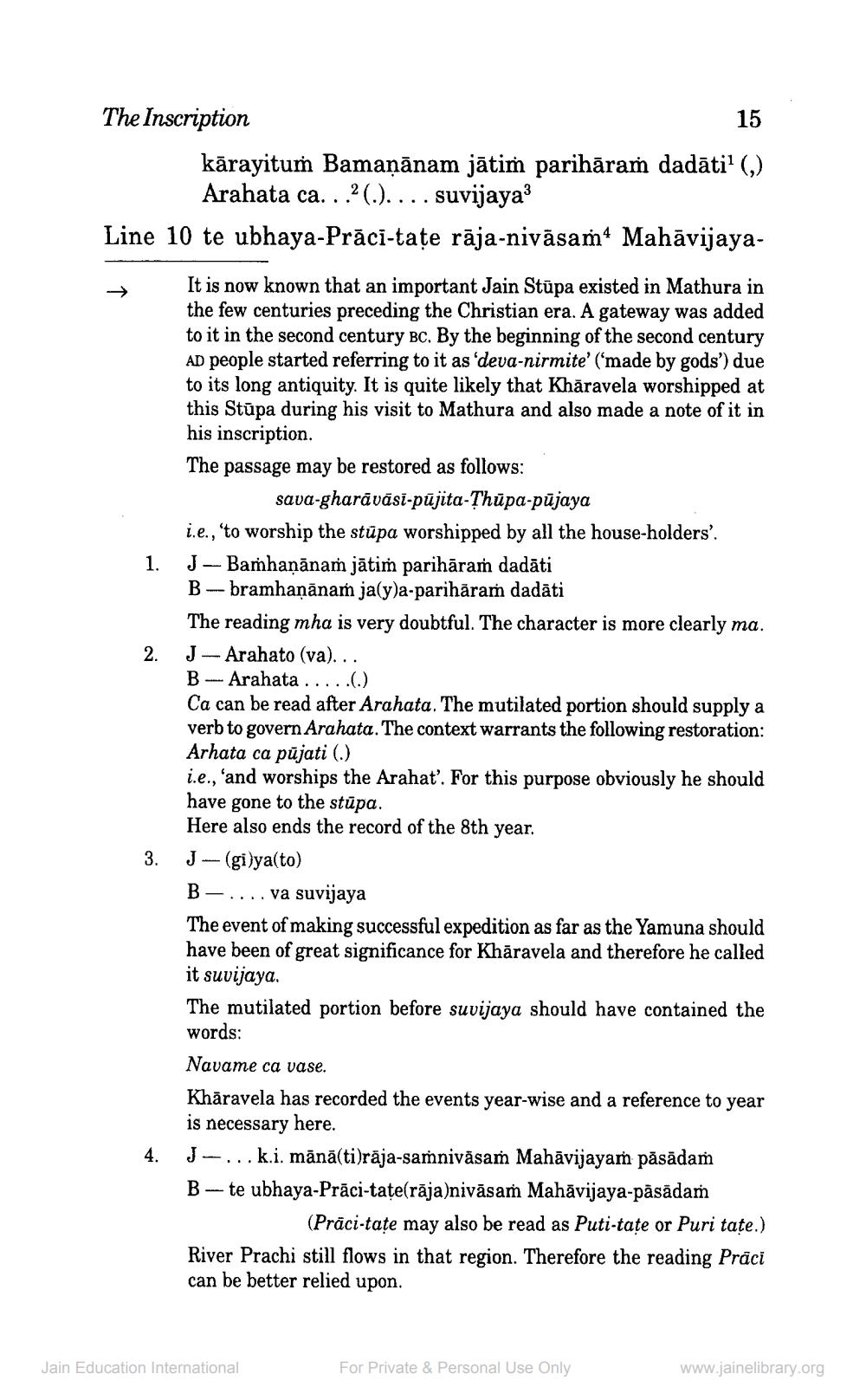________________
15
The Inscription
kārayituṁ Bamaņānam jātim parihāram dadāti? (,)
Arahata ca. ..2 (.). ... suvijaya Line 10 te ubhaya-Prāci-tate rāja-nivāsam4 Mahāvijaya
It is now known that an important Jain Stüpa existed in Mathura in the few centuries preceding the Christian era. A gateway was added to it in the second century Bc. By the beginning of the second century AD people started referring to it as 'deva-nirmite' ('made by gods”) due to its long antiquity. It is quite likely that Khāravela worshipped at this Stūpa during his visit to Mathura and also made a note of it in his inscription. The passage may be restored as follows:
sava-gharāvāsi-pūjita-Țhūpa-pūjaya i.e., 'to worship the stūpa worshipped by all the house-holders'. J - Baṁhanānam jātim parihāram dadāti B -- bramhanānam ja(y)a-parihāram dadāti The reading mha is very doubtful. The character is more clearly ma. J - Arahato (va)... B . Arahata .....(.) Ca can be read after Arahata. The mutilated portion should supply a verb to govern Arahata. The context warrants the following restoration: Arhata ca pūjati (.) i.e., 'and worships the Arahat. For this purpose obviously he should have gone to the stūpa. Here also ends the record of the 8th year. J- (gi)ya(to) B - .... va suvijaya The event of making successful expedition as far as the Yamuna should have been of great significance for Khāravela and therefore he called it suvijaya. The mutilated portion before suvijaya should have contained the words: Navame ca vase. Khāravela has recorded the events year-wise and a reference to year is necessary here. J- ... k.i. mānā(ti)rāja-samnivasam Mahāvijayam păsādań B-te ubhaya-Prāci-tate(rāja)nivāsam Mahāvijaya-pasadam
(Prāci-tate may also be read as Puti-tate or Puri tate.) River Prachi still flows in that region. Therefore the reading Prāci can be better relied upon.
3.
4.
Jain Education International
For Private & Personal Use Only
www.jainelibrary.org




